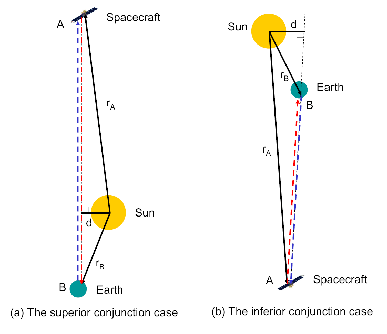The flatness of rotation curves of galaxies and the accelerating expansion of the Universe aretwo big challenges in the contemporary cosmology. Modified theories of gravity , such as f(T) gravity, are one solution to explain two observational phenomena by using scalar field, vector field or extra dimensions without two dark sectors. For ranging a spacecraft at 40 astronomical unit from the Sun, in this investigation, a new test of the quadratic f (T) gravity by measuring the gravitational time advancement is proposed and studied . This new test, which is quite different from Shapiro time delay, depend strongly on round-trip proper time span (not coordinate time one) of flight of radio pulses between an observer on the Earth and a distant spacecraft. Two special cases (the superior/inferior conjunctions) used to analyse the observability in the advancement contributed by the quadratic f (T) gravity (see Figure 1). It indicates that the advancement in the inferior conjunction case is almost 3.5 times larger than the one in the superior conjunction case, which is quite fit for detecting the gravity. While the influences of f (T) gravity on the gravitational time advancement might be theoretically detectable, the time resolution for distinguishing f(T) gravity from general relativity needs to be 10-19, it is still far beyond the current abilities of probing. It is looking forward to probing f (T) gravity by using optical clocks and the planetary laser ranging in the future. 
Fig. 1: Two special configurations of the distant spacecraft at point A, the Sun and the observer (at point B) on the Earth. This work is published by the journal of Classical and Quantum Gravity. And this research is supported by the National Nature Science Foundation of China under Grant Nos 11773080, 11473072 and 11533004. For more details, please see the following link: http://iopscience.iop.org/article/10.1088/1361-6382/aad391/meta |
